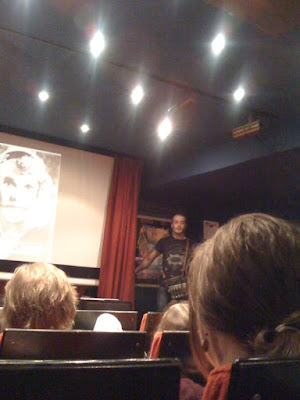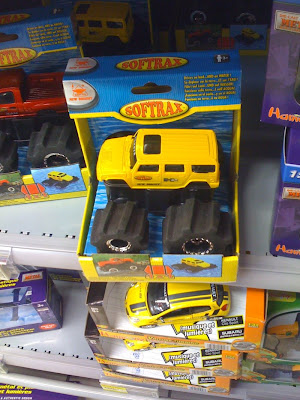
Essen is very close to the border with the Netherlands and there's a fair amount of influence that slops over, in both directions, from one to the other. I notice it in particular with the bike culture here. Most men in the Ruhrgebiet seem to prefer shock equipped mountain bikes that would be more at home on a rocky single track: not my idea of a good city bike. But women and some men are attracted to the upright posture frames common to Dutch bicycles. These bikes often feature full chain guards, fenders, an integral lock and a full array of baskets and panniers for shopping and/or a small dog. There are lots of brands, but Gazelle is so well known, people often use that brand name the way we might use the name Kleenex.

Coming out of the "10 speed" culture of the 1970's, these bikes didn't appeal to me when I first saw them, but they've really grown on me over the years. Now I covet every one I see. Gazelles are heavy bikes, so the appeal isn't about speed. On a Gazelle, the road is more important than the destination. I'm sure some of the attraction fades on the uphill stretches, but when people are riding a Gazelle, they just plain look good.
I've been keeping an eye out for a good used Hollandrad all year. In the meantime I've been riding another diamond frame upright bike that splits the difference between off-road and touring. It's a fine bike, but it has reminded me over the course of the year of something I already knew. Upright bikes and I aren't a good fit. After even a short distance, various aches and pains set in. I still covet the Gazelle, but I won't be riding one in this life.
 A few years back I bought a recumbent bicycle in Seattle. It's a Bacchette and I love it. People that become involved with recumbent bikes often display what I consider to be an over-abundance of passion about the upright/recumbent issue. I'm working at keeping things in perspective. But in the interest of full disclosure, I think I have to admit, I may be a zealot.
A few years back I bought a recumbent bicycle in Seattle. It's a Bacchette and I love it. People that become involved with recumbent bikes often display what I consider to be an over-abundance of passion about the upright/recumbent issue. I'm working at keeping things in perspective. But in the interest of full disclosure, I think I have to admit, I may be a zealot. And luckily for me, the Dutch don't just make beautiful upright bikes. They are also the home of several recumbent bicycle makers, some of them arguably among the most innovative in the world. The Flevobike company in particular is well known for innovation. One of their first products was a front wheel drive bike that hinges in the middle. Steering is accomplished by leaning. The front wheel drive feature is especially wacky and I'd love to have one of these bikes. But like the Gazelle, it's not a very practical solution for me.
 Instead, I bought a more basic model from Flevobike, used, on Ebay.de. I'm off to Mainz tomorrow to pick it up. It's not very exotic as recumbents go, but I'm hoping it will be a good choice for getting around Essen and some touring on the weekends. Assuming it's as fun to ride as I'm expecting, I'll be packaging it for the return trip in July. A full report will follow next week.
Instead, I bought a more basic model from Flevobike, used, on Ebay.de. I'm off to Mainz tomorrow to pick it up. It's not very exotic as recumbents go, but I'm hoping it will be a good choice for getting around Essen and some touring on the weekends. Assuming it's as fun to ride as I'm expecting, I'll be packaging it for the return trip in July. A full report will follow next week.























